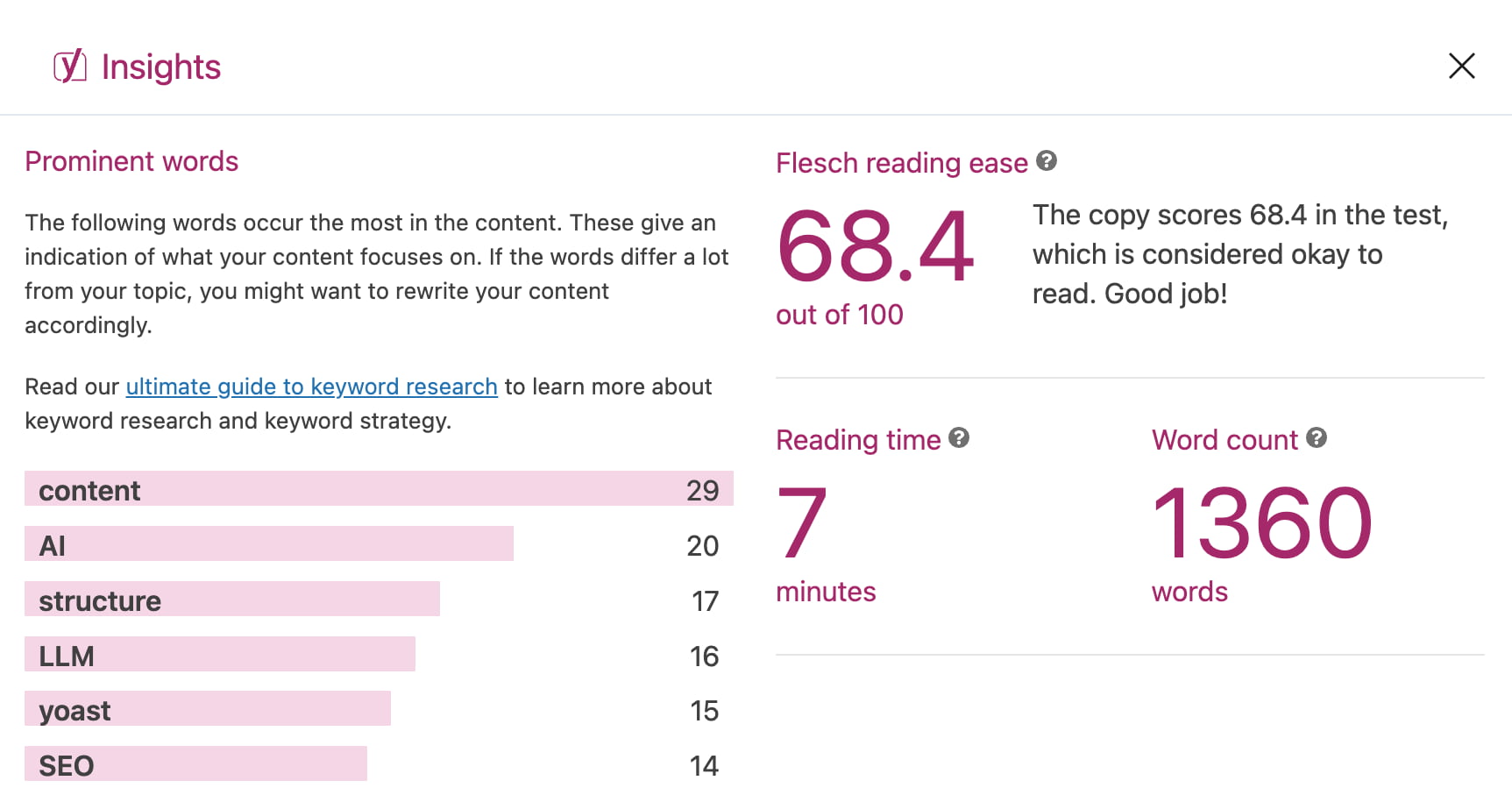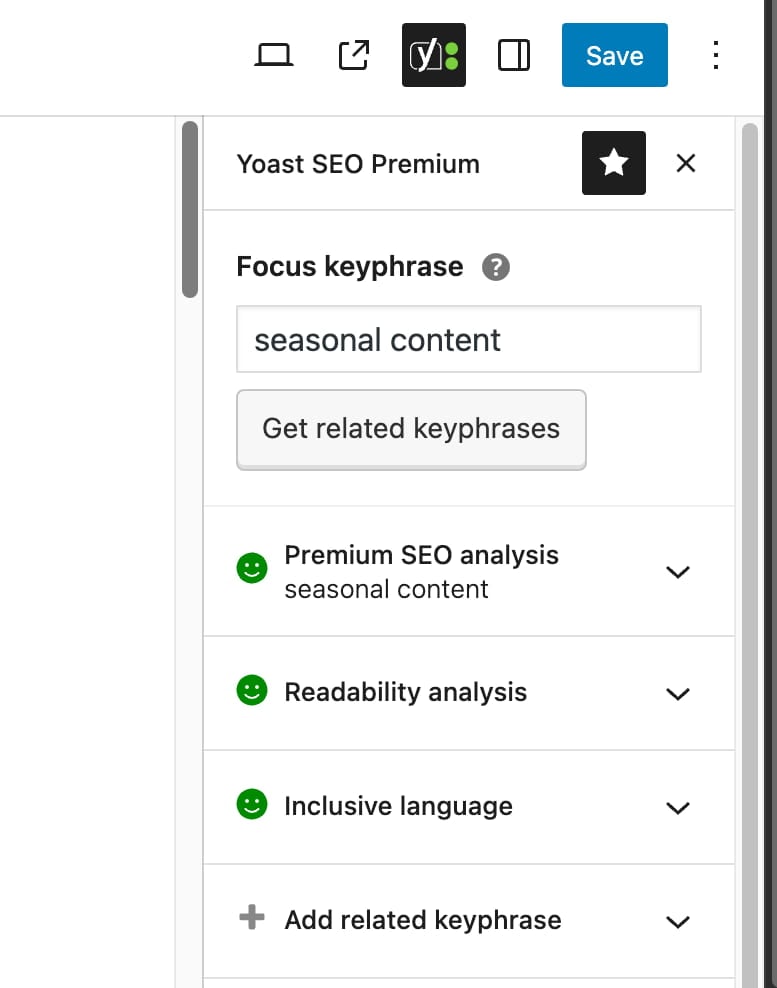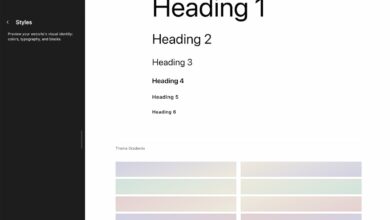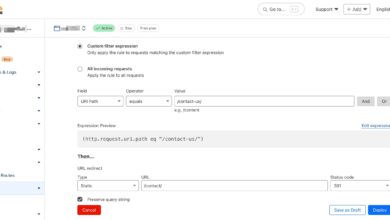
As AI-driven search engines rewrite the rules of content visibility, one thing is clear: optimization isn’t dead — it’s evolving. Large language models (LLMs) like ChatGPT, Google’s Gemini, and Perplexity AI don’t just retrieve web pages; they synthesize answers. And your content? It only gets included if it’s clear, relevant, and easy to extract. The good news? If you’re already using the Yoast SEO plugin, you have some of the most critical tools for this new era baked right into your workflow.
Learn how to structure content for AI
In this post, I’ll walk through how LLMs evaluate and extract content — and how Yoast SEO’s content analysis features, particularly the Flesch Reading Ease score and green light checks, can help you structure your writing for AI retrieval, not just human readers.
And more importantly, I want to clarify a common misconception: Yoast SEO isn’t about “chasing green lights.” It’s about helping you become a better, clearer communicator. Green lights aren’t the end goal—they’re indicators that you’re aligning your content with the kinds of clarity and structure that serve both readers and AI systems. In a world where LLMs decide what gets surfaced and summarized, being a better writer is your best competitive advantage.
Even if AI search doesn’t dominate your vertical today, it will. The best time to prepare was years ago. The second-best time is right now. Consider this your SEO shade tree: start planting.
What AI search wants from your content
Forget rankings — AI search is about retrievability and clarity. LLMs ingest and parse content based on:
- Literal surface-level term matching (yes, keywords still matter)
- Structural formatting cues like headings, lists, and bullet points
- Clarity of ideas — one idea per paragraph, one purpose per section
- Prompt alignment — using the same terminology your audience would use
Even the smartest LLM will skip your content if it’s overly complex, meandering, or fails to mention the query terms directly. That means no more hiding your key points in paragraph five. No more cute, clever intros that never get to the point. The models are pulling excerpts, not reading for nuance.
This is where Yoast SEO shines. Its features, often seen as basic hygiene, are perfectly aligned with what makes content usable by AI.
The Flesch Reading Ease score is more important than ever
In a world of AI Overviews and synthesized summaries, readability is a superpower.
The Flesch Reading Ease score — included in the Yoast SEO content analysis — doesn’t just help human readers skim your content. It helps machines parse and interpret it.
LLMs prefer:
- Shorter sentences
- Simple phrasing
- One idea per paragraph
These are the exact factors the Flesch score evaluates. So when Yoast flags your content as difficult to read, it’s not nitpicking — it’s showing you what might keep your article out of an AI Overview.
Pro tip: When possible, aim for a Flesch score above 60, especially for top-of-funnel or FAQ-style content you want to be quoted or summarized.
And let’s be clear: this doesn’t mean your content has to be simplistic or dumbed down. It just needs to be accessible. Plainspoken, not generic. Direct, not dull. Think of it as writing for a global audience — or a machine that doesn’t have time for interpretive poetry.

Don’t ignore those green lights (Even when you think you know better)
I’ll be honest: I’ve been one of the worst offenders when it comes to ignoring those green lights. I like long sentences. I enjoy prose that meanders a little if it means delivering a point with style. And I’ve spent enough of my career writing professionally that being told how to write by a plugin occasionally rubbed me the wrong way.
But here’s the thing I’ve come to accept: it’s not that the plugin is trying to replace your voice or artistry. It’s that it’s trying to ensure your work can be understood, parsed, and surfaced—especially by machines.
It is absolutely still possible to create highly visible content that doesn’t earn a green light for sentence structure or reading ease. I’ve done it. But those pieces need to be intentional. They need to be structured so that the core ideas—the “meat” of the argument—aren’t buried in the longest paragraph of the article or expressed only in dense, lyrical blocks of text.
If you want to break the rules, fine. But make sure you know where the lines are before you step over them. The art is still welcome—it just has to be thoughtfully placed.
Yoast’s content checks aren’t arbitrary — they’re aligned with how both humans and machines understand text. In fact, many of the green-light criteria align shockingly well with what LLMs are known to favor:
- Subheadings every 300 words = easier segmentation and extraction
- Introductory paragraph present = good for AI frontloading
- Paragraph length = one idea per chunk, which is LLM-friendly
- Sentence length limits = fewer chances for parsing failure
In other words: the green light checklist is not just “SEO best practice.” It’s an LLM comprehension checklist in disguise.
And while experienced writers might feel tempted to override these warnings with “but this sounds better to me,” it’s worth considering how much clearer your writing becomes when you follow them. Especially when writing for an audience that might include an algorithm.

Structuring for LLMs: A Yoast-assisted framework
If you want your content to get pulled into AI-generated answers, try this simple structure — and let Yoast SEO help enforce it:
- Start with a TL;DR or definition: Use short, declarative sentences. Bonus if you can bold the key phrase or structure it as a definition. LLMs love to latch onto clear, answer-style content.
- Use subheadings to divide your points: Make sure each section answers one specific question or explains one concept. Headings serve as cues for both readers and models.
- Use bulleted or numbered lists: Yoast SEO will warn you if a list is too long without proper formatting. LLMs love well-structured lists because they can be directly extracted.
- Echo the query language: Use the exact phrases people search for. This helps the AI match your content to user prompts. Literal matching still matters.
- End with a clear summary or CTA: AI often pulls from intros or conclusions. Don’t waste them. Reinforce your main point and point readers toward next steps.
Even if you’re writing complex thought leadership content, this structure ensures your brilliance is actually understood and surfaced.
You don’t need Schema if your structure is clear — but it helps
Structured data is still valuable, especially for establishing context and disambiguating entities. But Yoast SEO users should remember: if your page is poorly written or confusing, schema won’t save it.
LLMs cite content that is:
- Logically segmented
- Written in plain, direct language
- Free of interruptions, overlays, or unrelated diversions
Yoast SEO helps you get there — not just with schema tools, but with live readability feedback during writing.
It’s also worth noting that while structured data might support AI understanding, it’s the structure of the writing that matters most for inclusion in AI responses. LLMs pull paragraphs and list items, not rich snippets. If you want to be quoted, you have to be quotable.
TL;DR: Use Yoast SEO to make your content AI-ready
In the age of AI search, optimization means:
- Writing like a human, formatting like a machine
- Saying things plainly
- Echoing how people phrase questions
- Structuring content so it can be lifted and used
Yoast SEO’s content analysis isn’t just a checklist — it’s an AI visibility strategy. That little green light might be your ticket to being the source LLMs choose to summarize.
Don’t fall into the trap of writing for the plugin. Use the plugin to write better for people and machines. That shift in mindset makes all the difference.
And as LLMs continue to power more and more of the search experience, from Google AI Overviews to tools like ChatGPT Browse, that visibility is worth more than position #1 ever was. Start now. You’ll be glad you did.
The post How to optimize content for AI LLM comprehension using Yoast’s tools appeared first on Yoast.



